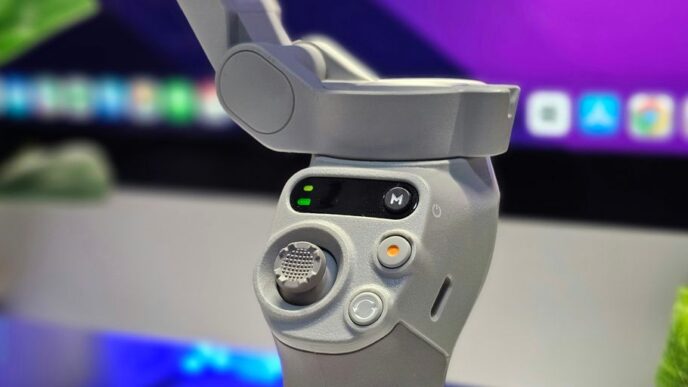
Introduction
Computer forensics, a branch of digital forensic science, involves the investigation and analysis of computer systems to uncover and preserve evidence of criminal activity. With Apple Mac computers becoming increasingly popular in both personal and professional environments, understanding the nuances of conducting computer forensics on these devices is essential. This guide explores the key aspects of computer forensics on Apple Mac computers, including tools, methodologies, and best practices.
Understanding the Mac Ecosystem
Apple Mac computers run on macOS, a Unix-based operating system known for its security features, user-friendly interface, and robust performance. The macOS environment presents unique challenges and opportunities for forensic investigators, requiring specialized knowledge and tools to effectively extract and analyze data.
Common Forensic Scenarios Involving Mac Computers
- Intellectual Property Theft: Employees or insiders may misuse company data, necessitating a forensic investigation to trace unauthorized access or copying of sensitive information.
- Fraud and Financial Crimes: Digital forensics can help uncover evidence of fraudulent activities, such as manipulation of financial records or unauthorized transactions.
- Cybersecurity Incidents: Investigating malware infections, unauthorized access, or data breaches on Mac systems to identify the source and extent of the compromise.
- Litigation and E-Discovery: Gathering digital evidence from Mac computers to support legal proceedings and ensure compliance with e-discovery requirements.
Key Forensic Tools for Mac Computers
Conducting forensic investigations on Mac computers requires specialized tools that can handle the macOS file system, encryption, and other unique features. Some essential tools include:
- macOS Native Tools:
– Terminal: The command-line interface in macOS provides access to various Unix-based commands useful for forensic analysis.
– Disk Utility: Used for creating disk images and verifying the integrity of storage devices.
- Commercial Forensic Suites:
– Cellebrite: Known for mobile forensics, Cellebrite also offers solutions for Mac forensics, including data extraction and analysis.
– BlackBag Technologies: Specializes in Mac forensics with tools like BlackLight for data analysis and MacQuisition for disk imaging and data acquisition.
- Open-Source Tools:
– Autopsy: A free, open-source digital forensics platform that supports macOS and can analyze disk images and file systems.
– Mac4n6: A collection of macOS forensic tools and scripts designed to facilitate data extraction and analysis.
Forensic Methodologies for Mac Computers
- Preparation and Planning
Before beginning a forensic investigation, it is crucial to develop a comprehensive plan that outlines the objectives, scope, and methodology. This includes identifying the types of data to be collected, the tools required, and any legal considerations.
- Acquisition
The acquisition phase involves creating a forensic copy of the Mac computer’s storage device. This is typically done using disk imaging tools to ensure a bit-by-bit copy of the data, preserving its integrity for analysis. Write blockers may be used to prevent any changes to the original data during the acquisition process.
- Preservation
Preservation involves maintaining the integrity of the acquired data to ensure it is admissible in court. This includes documenting the chain of custody, using hash values to verify data integrity, and securely storing the forensic copies.
- Analysis
The analysis phase is where forensic investigators examine the acquired data to uncover evidence. This can involve:
– File System Analysis: Examining the macOS file system, including HFS+ or APFS, to identify files, directories, and metadata.
– User Activity Analysis: Investigating user activities, such as login records, browser history, and application usage.
– Data Recovery: Recovering deleted files, emails, and other data that may provide crucial evidence.
- Reporting
The final phase involves compiling a detailed report of the findings, including the methodology used, the evidence uncovered, and any conclusions drawn. The report should be clear, concise, and suitable for presentation in legal proceedings if necessary.
Challenges in Mac Forensics
- Encryption: macOS offers strong encryption features, such as FileVault, which can complicate data acquisition and analysis.
- Proprietary File Systems: Understanding and navigating Apple’s proprietary file systems (HFS+ and APFS) requires specialized knowledge and tools.
- System Integrity Protection (SIP): SIP restricts access to certain system files and directories, posing additional challenges for forensic investigators.
- Frequent Updates: Regular macOS updates can change system behavior and file structures, requiring forensic tools and methodologies to be continuously updated.
Best Practices for Mac Forensics
- Stay Updated: Regularly update forensic tools and stay informed about the latest developments in macOS and forensic methodologies.
- Training and Certification: Obtain training and certification in Mac forensics to ensure proficiency in handling macOS-specific challenges.
- Legal Compliance: Ensure all forensic activities comply with relevant legal and regulatory requirements, including data privacy laws.
- Documentation: Maintain thorough documentation of all forensic activities, including the acquisition process, analysis steps, and chain of custody.
Conclusion
Computer forensics on Apple Mac computers requires specialized knowledge, tools, and methodologies to effectively extract and analyze data. By understanding the unique challenges posed by macOS and employing best practices, forensic investigators can successfully uncover and preserve critical digital evidence. As Mac computers continue to gain popularity, the field of Mac forensics will undoubtedly evolve, necessitating continuous learning and adaptation by forensic professionals.












